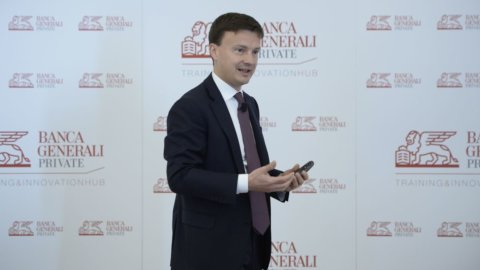The meeting organized by PwC entitled "Italia2021" took place yesterday, with a large audience of guests from the world of business, politics and finance. During the section dedicated to finance, the topic of private savings was also touched upon and how this enormous resource, especially in a market like the Italian one, can help the real economy. On this he intervened in particular the CEO of Banca Generali Gian Maria Mossa, who recounted what has happened in recent months by answering these questions.
How to move the famous 1.500 billion that rest in the current accounts of Italians?
“Today there are three components to current accounts: the first is linked to the very nature of current accounts which are payment instruments. Then the second is linked to uncertainty, the third to investing with the classic Bot people, savers who invested in government bonds who now prefer to leave their money in their current account. The first component must be managed, that of investments must certainly be optimised, while the natural availability of cash in the current account is a quantity in line with other world economies. The challenge – added Mossa – is therefore up how to manage a third of these 1.500 billion to optimize them financially to allow the saver to have a greater return. Obviously with a risk component and we need to work on this”.
How can private savings be brought closer to investments in the real economy?
“This is not a new theme because there have been products that need to be optimized for some time. Like for example Eltifs and securitizations. I give an example of what we have done and a proposal. We at Banca Generali have accelerated on securitisations in this period, we are the player that has done the most for a figure that goes over one billion. To do so, the risk of an instrument like this must be "unpacked", which must end up in the hands of institutional investors in the riskiest component. Precisely in this way, in March we guaranteed 100 million in liquidity to SMEs thanks to the guarantees provided by the State and by our parent company Generali. In this way we have freed up cash for companies taken from private savers who have invested because they are strengthened by the protection guaranteed by these two professional investors. In terms of the proposals, it must be said that today securitizations from a regulatory point of view are considered evil according to a regulatory logic that should instead be updated since it is stuck in the 90s. This limits the retail saver who cannot take a product with this double guarantee. Today the risky product label makes no sense. And also in the light of European regulations, it would make sense to update our Italians to open up to a wider audience".
Are Italians still tied too much to real estate?
“Today bricks and mortar are still worth 60% of the total 1.500 billion in assets. But for 3-5 years the properties have lost real value, but also the nominal value and illiquidity of the investment. Once the big centers have been removed, everyone realizes that the brick no longer equates to the concept of shelter. We have mapped around 70 billion in real estate investment and the biggest need in this case is how to extract liquidity”.
There is a lot of talk about investing in sustainability. What is your position?
“In the financial world it is an increasingly strong theme. So much so that placing the ESG label on all products seems to be the only way to obtain collection data. Today the first serious issue is the measurability of the impact: we have partnered with a London company (Main Street Partners) which basically maps all the main ESG funds not only in terms of content, but in terms of SDG's UN 2030 agenda: customers choose how to create a contribution where customers choose where to be sustainable. It is the greatest challenge for us, namely that of giving the sense of concrete things moving from technicality to concreteness. We presented this platform in Davos where the customer chooses the SDG's target and can, for example, understand how much has been saved in terms of road pollution. In this way, the audience interested in sustainability expands and new products can be conceived”.





